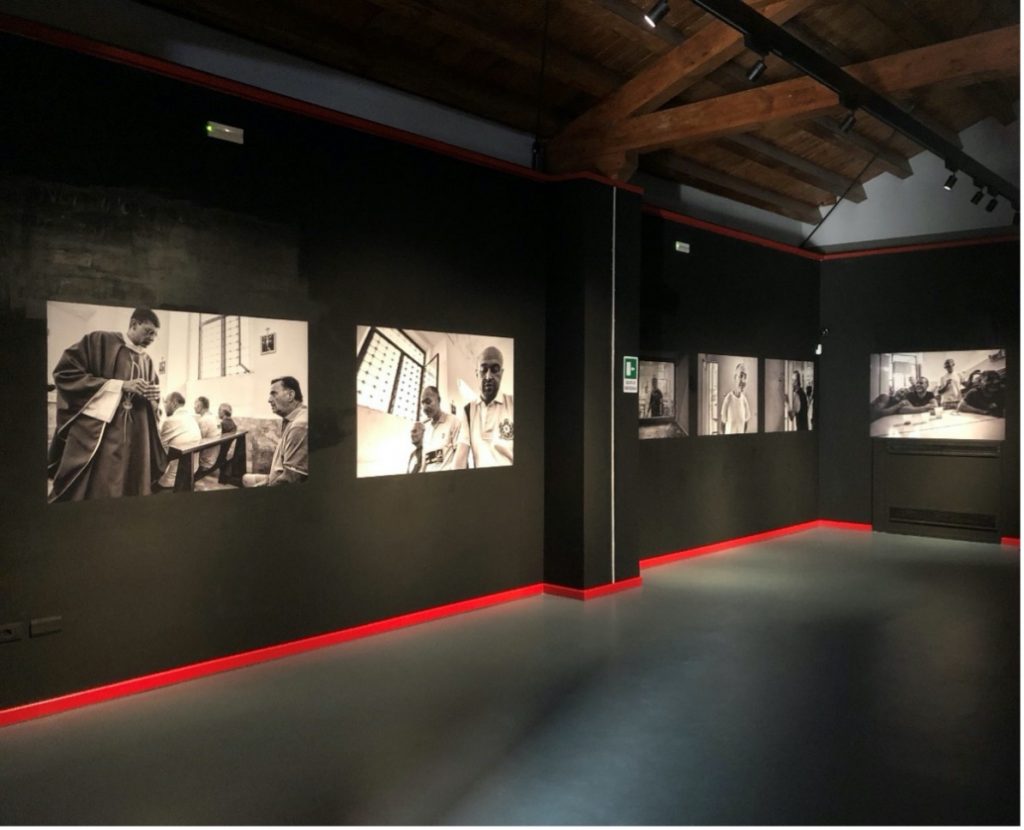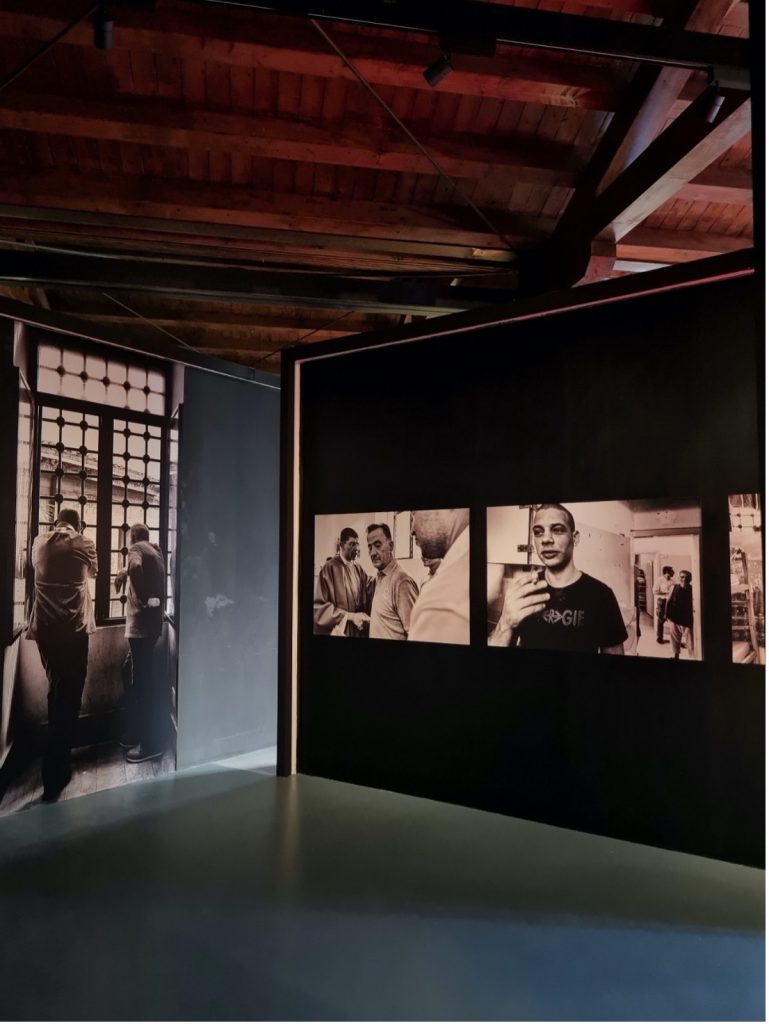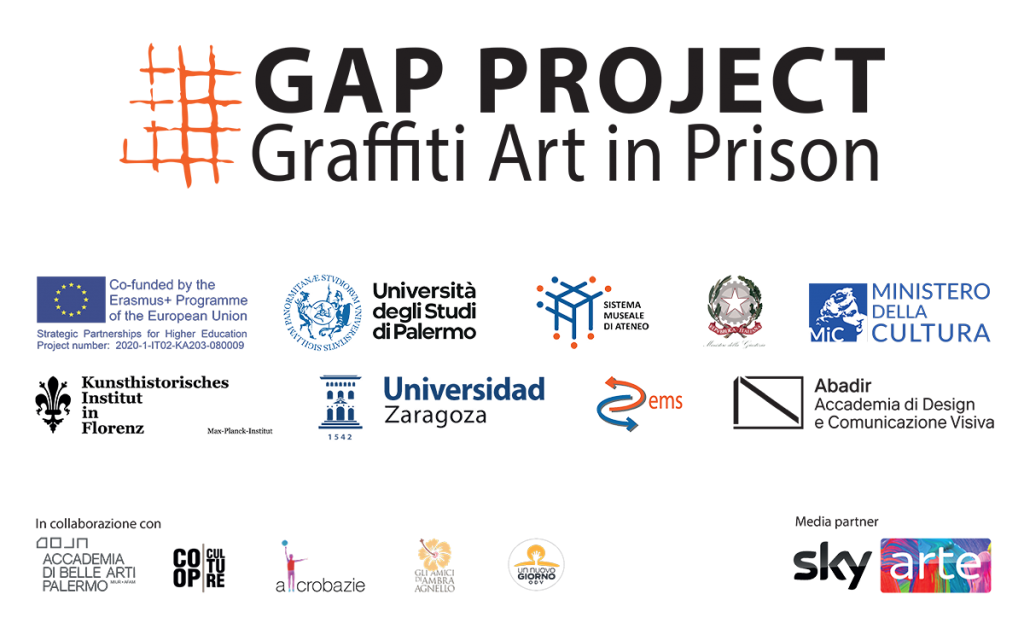María Foradada, Marcos Larraz
From October 15th to November 12th 2022 the Centro Internazionale di Fotografia di Palermo “Letizia Battaglia”, located in the Cantieri Culturali alla Zisa, hosted the exhibition “Ucciardone – ‘U Ciarduni”, by the photographers Michele Di Leonardo (Palermo, 1963) and Salvo Valenti (Palermo, 1962).
The exposition, with more than thirty large-format black and white images, was divided into two spaces: a first room where we could see all the photographs of both authors; and a second separate room where the same images were digitally projected with musical accompaniment, thus increasing their drama and the effect they had on the viewers. Also noteworthy was the originality of the space – an old factory converted today into a place of cultural production through an experimental model of urban and human regeneration – and the relationship established between it and the exhibition. For the visitors there was also the opportunity to see the permanent collection of photographs, belonging to the personal archive of Letizia Battaglia (Palermo, 1935-2022). The famous Palermo-born photographer and photojournalist Letizia Battaglia devoted her entire life to show the difficulties and contradictions of her hometown. In 2017 she founded the photographic center (where this exhibition took place) and she was its director until her death, when the center was named after her.

Michele Di Leonardo and Salvo Valenti are two photographers born in Sicily in the 1960’s, and particularly interested in social photography and street life, always having people as the focal point of their projects. “Ucciardone – ‘U Ciarduni” is a photographic reportage that reflects the daily life inside this prison, from a completely opposite point of view compared the images commonly used in the various media to talk about penitentiary institutions. In the words of art historian Maria Antonietta Spadaro, Valenti and Di Leonardo choice to «cross the access door to the by definition forbidden space of the prison, says it all about their will to break down a taboo, to bring a breath of normal life inside those hated walls».

In their images we do not perceive agitated, confused or turbulent moments inside Ucciardone, but various instants of the detainees’ daily life: rest moments, a game of cards, Sunday mass or lunch time are just some of the examples of what visitors can (could) contemplate. These photographs are the result of months of work carried out in 2017 and that both artists have explained to the Italian newspaper La Repubblica. During this time, they were able to share the day-to-day life of a group of prisoners with lightpenalties, for example who ended up in prison for raids, thefts or robberies. Their intention was to share the emotions they experienced there, and both say that what struck them most was the feeling of help and welcome that they did not expect.
The hospitality and availability that the artists received from the inmates is reflected in the profoundly human sense that their images take on, in which the jail bars share the limelight with the smiles and kind gestures of the convicts. As Michele Di Leonardo points out, this work «aims to go through that wall that prison is made of, beyond bars, keys, long corridors… We wanted to show this to everyone: there is also a dimension of humanity, as well as a clear sign of their will to remain anchored to a life they have left behind». To this end, and to try to spend the time they have left inside in the most dignified way possible, the prisoners try to reproduce in their cells their life outside through the most everyday objects, which are also reflected in the photographs.

Returning to the words of historian Spadaro, collected in the volume published in 2018 (in which these and other images taken by the artists inside the Ucciardone are included), the snapshots by Michele Di Leonardo and Salvo Valenti have the main purpose of recording the atmospheres of this place in their repeated everydayness. These photographs, of “unquestionable professionalism”, again following Spadaro, despite not seeking the perfect framing or formal perfection – precisely to better reflect that mentioned everyday life – are also of unquestionable quality. But above all, they manage to make us reflect, because they force us to look at such a disturbing, uncomfortable and controversial reality of our society as the spaces of confinement and deprivation of liberty. This was their goal, and this is undoubtedly the greatest achievement of the two photographers.
References
M. di Leonardo, S. Valenti, Ucciardone – U Ciarduni, Palermo 2018.
G. lo Porto, La vita all’interno dell’Ucciardone con le foto di Valenti e Di Leonardo, La Repubblica, October 13, 2022 https://palermo.repubblica.it/societa/2022/10/13/news/la_vita_allinterno_dellucciardone_con_le_foto_di_valenti_e_di_leonardo-369876428/
L. Ricca, La vita all’interno del carcere: gli scatti di Michele Di Leonardo e Salvo Valenti nella mostra “Ucciardone – ‘U Ciarduni, Il Mediterraneo 24, October 11, 2022 https://www.ilmediterraneo24.it/in-sicilia/sicilia/la-vita-allinterno-del-carcere-gli-scatti-di-michele-di-leonardo-e-salvo-valenti-nella-mostra-ucciardone-u-ciarduni/
S. Trovato, Palermo, la vita fra le celle dell’Ucciardone negli scatti dei fotografi Di Leonardo e Valenti, Giornale di Sicilia, October 15, 2022 https://palermo.gds.it/articoli/cultura/2022/10/15/palermo-la-vita-fra-le-celle-dellucciardone-negli-scatti-dei-fotografi-di-leonardo-e-valenti-eb03cd72-3ab5-45f5-932c-a772b0c6c170/

